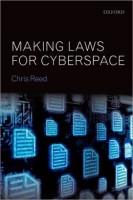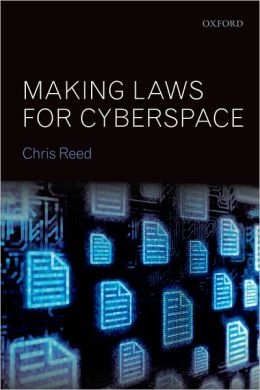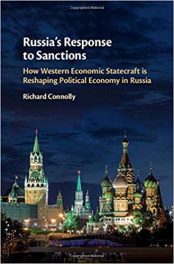 Author: Chris Reed
Author: Chris Reed
Publisher: Oxford University Press – 249 pages
Book Review by: Deekay Daulat
Some 2.4 billion people, constituting one third of the world’s human population, were using the Internet as of June 2012, according to Wikipedia, commonly known as the global online encyclopedia.
The Internet is a vast, interconnected, global system of computer networks. It began developing in the 1960s with efforts undertaken by the Advanced Research Projects Agency at the U.S. Department of Defense. The Internet’s progenitor was the ARPANET, the world’s first operational packet-switching network that implemented the TCP/IP system. Read further below on it.
A computer network is a type of telecommunications network that enables a number of computers – that could range from a few to millions of computers worldwide – that enables communication, through data and voice, with the use of networking hardware and particular types of software.
The computer network uses a standard Internet protocol suite consisting of two components: the Transmission Control Protocol and the Internet Protocol, commonly known in short as TCP/IP that provides end-to-end connectivity specifying how data should be formatted, addressed, transmitted, routed and received at the destination.
For those interested, more information about the technical aspects of this telecom system used for the Internet can be obtained on the Internet itself.
This book deals with issues relating to how to govern and make the right kinds of laws (easily understood, having clearly-specified aims, effective, enforceable, etc.) when using this vast global telecommunications system commonly called the Internet.
It is a given that in any endeavor involving dealings between and among human beings, in order to maintain order and harmony, rules of behavior commonly known as laws must be in place to protect everyone’s rights and responsibilities.
Most users of the Internet currently act lawfully through voluntary obedience. But there are those who do not do so, such as cyber thieves and those that post content that is morally offensive or threatens the security and lives of others. This book discusses what to do about such people
The author of this book Chris Reed is a lawyer and teacher laws. He is Professor of Electronic Commerce Law at Queen Mary, University of London. He teaches on a number of Queen Mary’s LLM (master of laws) courses in the field, which include Computer Law, Electronic Commerce Law, and Cyberspace Law.
Chris Reed deplores the current state of laws pertaining to cyberspace. He writes: “For the last twenty years or so I’ve been dissatisfied with the state of laws I’ve been teaching, writing about and advising on. Far too much of my time, and that of my students and clients, seems to have been wasted in discovering what the law is and what it was intended by its lawmaker to mean.”
He writes that clients have no real interest in what a particular law says, nor its technical meaning. He says that clients want to know the best ways to achieve their own aims without violating the law. But the problem is that the law relevant to what the client wants to do is “so complex and hard to understand that only a small proportion of my time could be spent on that useful advice, because it took so long to get to grips with the law itself.”
He has found a lot of defects in laws on cyberspace. He explains: “the effects of those defects are less apparent in laws that govern our physical world activities, but in cyberspace they result in a system of laws which is so far from ideal that it imperils the very enterprise of law itself.” He points out to those defects and their remedies in this unique work that takes a look at a subject that is still evolving.
The material presented in this book is organized into 13 chapters within four parts. The four parts respectively are on:
- Cyberspace as a lawful place, with chapters on command and control and the route to lawfulness
- Law-making authority, including chapters on extra-territoriality, enforcing law in cyberspace and sources of authority
- Respect-worthy laws, including an interesting chapter entitled “three ways to make meaningless law” and another one named “mismatch with cyber reality”
- Law-making, with chapters on revisiting the modalities of regulation and making laws for cyberspace.
The book provides a three-page-long list of European cases for review by those who want to study further on their outcomes, and another list, six-and-half-pages long, of European legislation relevant to cyberspace.







